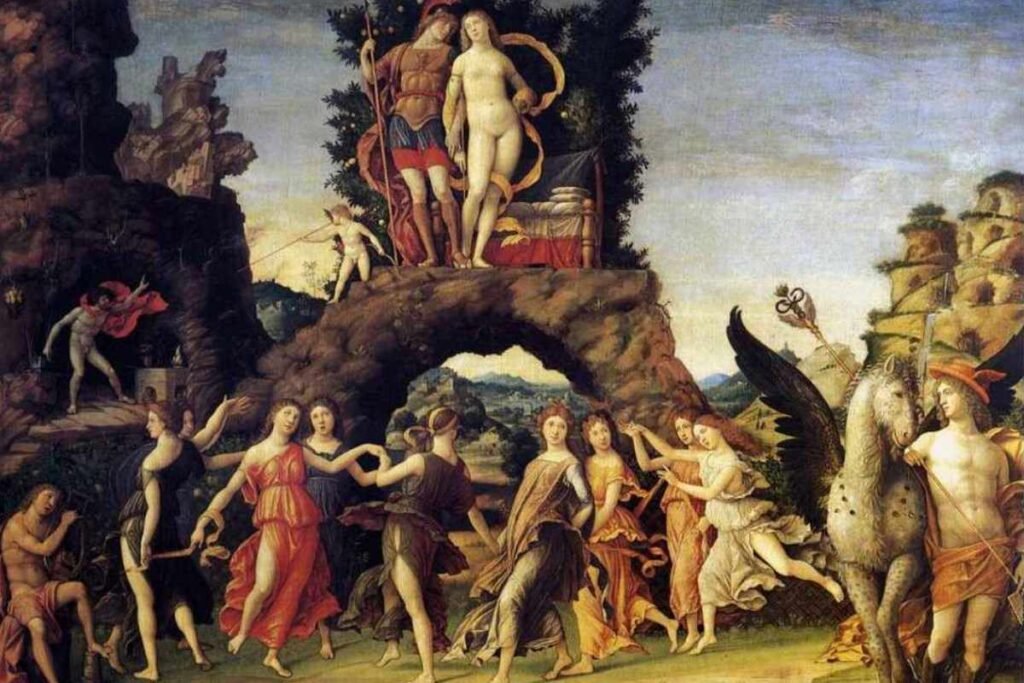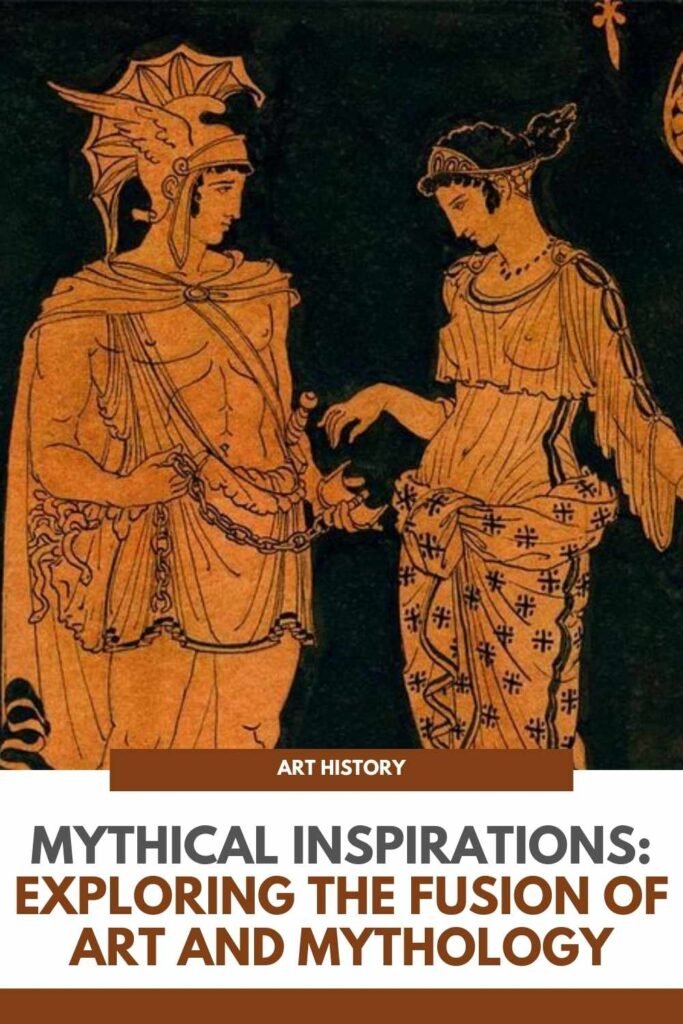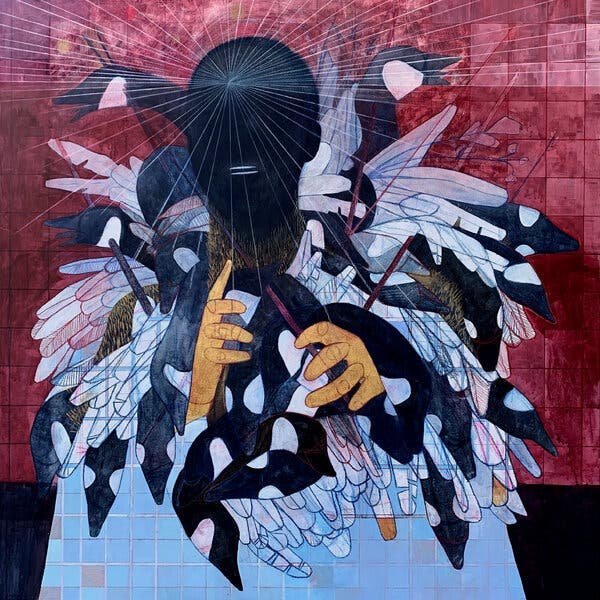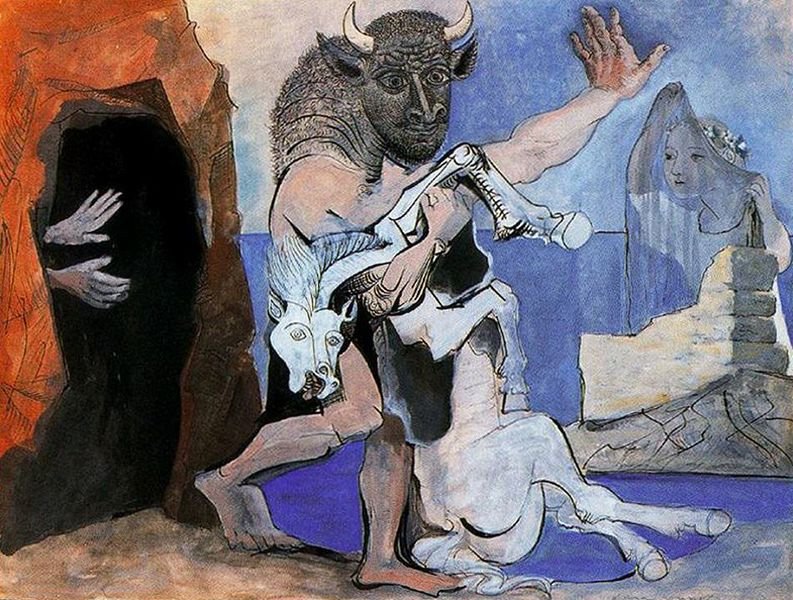Imagine immersing yourself in the captivating world of mythological and symbolic art prints from around the globe. From ancient civilizations to modern interpretations, these artistic creations transport you to distant realms filled with enchantment and wonder. Delve into the rich tapestry of cultural beliefs and storytelling through mesmerizing visuals that explore the universal themes that connect humanity. Join us on a journey of discovery as we unlock the secrets behind these captivating artworks, where every brushstroke or etching has a deeper meaning waiting to be unraveled. Get ready to embark on an extraordinary exploration of the fantastical and the symbolic, where imagination knows no boundaries.
Understanding the Role of Mythology in Art
Art has always been deeply intertwined with mythology, creating a fascinating tapestry of cultural expression. Mythology, with its rich narratives and archetypal characters, has served as a wellspring of inspiration for artists throughout history. By delving into the influence of mythology on historical art forms, exploring how myths shape cultural expression, and deciphering mythology in modern art, we can gain a deeper appreciation for the role that mythology plays in the world of art.
Influence of Mythology on Historical Art Forms
From ancient cave paintings to classical sculptures, mythology has been a driving force behind many historical art forms. In ancient Greece, for example, mythological stories and characters served as a central theme in art, especially during the Hellenistic period. Artists such as Praxiteles and Phidias created iconic sculptures of deities like Zeus and Aphrodite, capturing the essence of these mythological figures and making them tangible to the viewer. Similarly, in ancient Egypt, mythology played a significant role in the creation of intricate hieroglyphics and tomb paintings, depicting the gods and their interactions with humanity. The influence of mythology on historical art forms cannot be overstated, as it provided artists with a powerful narrative framework and a means to connect with their audience on a deeper level.
How Myths Shape Cultural Expression Through Art
Myths are not merely stories; they are a reflection and embodiment of a culture’s values, beliefs, and traditions. Through art, these myths are brought to life, giving form to the intangible aspects of a culture’s identity. Take, for example, the art prints of Chinese mythology. The stories of deities such as the Monkey King and the Eight Immortals have been immortalized in paintings and prints, serving as a visual representation of Chinese folklore and spirituality. By depicting these mythological tales, artists not only preserve their cultural heritage but also offer a window into the worldview and values of the Chinese people.
Interpreting Mythology in Modern Art
In the realm of modern art, mythology continues to serve as a source of inspiration, albeit in more abstract and interpretive ways. Artists today often explore mythology not only as a means of storytelling but also as a tool for exploring universal human experiences and emotions. By drawing upon ancient myths, artists can tap into a collective unconsciousness that transcends time and place. Modern art prints, for example, may depict mythological figures or symbols in a contemporary context, inviting viewers to reflect on the timeless relevance of these narratives. Through this reinterpretation of ancient myths, artists foster a sense of connection between past and present, inviting us to reflect on our own lives and search for deeper meanings.
Symbolism in Art Prints
Art prints have long been a canvas for symbolic expressions, harnessing the power of visual symbols to evoke emotions, convey messages, and challenge societal norms. By exploring the use of symbols in art history, deciphering symbol meanings in various art pieces, and understanding symbolic art as a tool for societal commentary, we can unravel the intricate language of symbols embedded in art prints.
Exploring the Use of Symbols in Art History
Symbols have been a staple of artistic expression across cultures and time periods. From the ancient Egyptian ankh symbolizing life and eternal existence to the Christian cross representing sacrifice and redemption, symbols have the ability to transcend language and communicate complex ideas. In art history, symbols were often used to convey hidden meanings or serve as allegorical devices. The Renaissance period, for instance, saw the rise of elaborate symbolism in artworks, such as the use of the lily as a symbol of purity or the hourglass as a reminder of the fleeting nature of time. The utilization of symbols in art history highlights the universal power of visual language to convey profound concepts and emotions.
Deciphering Symbol Meanings in Various Art Pieces
Symbols in art prints can be both enigmatic and illuminating, challenging viewers to decipher their meaning and engage in a deeper level of interpretation. Each symbol carries its own unique significance, often influenced by cultural, historical, and personal contexts. For example, the lotus flower, which is a common symbol in Asian art prints, represents purity, enlightenment, and rebirth in Eastern mythology. In Western art prints, the dove is often used as a symbol of peace and innocence. By analyzing the symbols present in art prints, we can gain insight into the artist’s intentions, cultural references, and the broader social and historical context in which the artwork was created.
Symbolic Art as a Tool for Societal Commentary
Art has always been a tool for societal commentary, and symbolic art, in particular, can be a powerful vehicle for conveying social, political, and cultural messages. Symbolic art prints often serve as a way for artists to challenge prevailing norms, expose injustices, or advocate for change. Take, for example, the artwork of political cartoonists, who employ symbols and metaphors to critique political figures or comment on social issues. Symbolic art prints have the unique ability to evoke emotions, provoke thought, and inspire dialogue, making them a potent tool for social activism and raising awareness of critical societal issues.

Asian Mythology in Art Prints
Asia is home to a rich tapestry of mythological traditions, each with its own unique stories, gods, and symbolism. Through art prints, we can explore the mythological influences in Chinese, Indian, and Japanese cultures, gaining a deeper understanding of the narratives and symbols that shape these artistic traditions.
Chinese Art Prints and Their Mythological Influences
Chinese mythology is a treasure trove of fantastical tales and mythical creatures. From the legendary Monkey King to the Dragon, Chinese art prints often depict these iconic figures, drawing inspiration from ancient folklore and literature. The art of Chinese printmaking, with its meticulous attention to detail and vibrant colors, brings these mythological characters to life, showcasing the intricate symbolism and cultural significance embedded within the artwork.
Indian Mythological Representations in Art Prints
Indian mythology is a vast and diverse tapestry, filled with tales of gods, goddesses, and epic heroes. Art prints that portray Indian mythology often feature deities such as Shiva, Vishnu, and Krishna, capturing their divine beauty and power. These prints serve not only as visual representations of mythological stories but also as sacred objects that allow devotees to connect with the divine. Indian art prints often incorporate intricate patterns, vivid colors, and symbolic motifs, reflecting the richness and complexity of Indian mythology.
Impact of Japanese Mythology on Art Prints
Japanese mythology has had a profound influence on the country’s art and aesthetics. Art prints, such as ukiyo-e prints, frequently feature mythological creatures like the Kitsune (fox), Tengu (bird-like creature), and Kappa (water-dwelling creature). These prints capture the essence of Japanese folklore, with its emphasis on the balance between nature and civilization, the supernatural and the mundane. The art of Japanese printmaking, with its delicate lines and subtle color palettes, reflects the nuanced and contemplative nature of Japanese mythology.
European Mythology in Art Prints
European mythology, with its array of gods, heroes, and mythical creatures, has left an indelible mark on Western art prints. From the influence of Greek mythology in Western art to the symbolism and mythology of Norse and Slavic art prints, the European artistic tradition is deeply entwined with its mythological heritage.
Greek Mythology Influences in Western Art Prints
Greek mythology has been a perpetual source of inspiration for artists across the ages. The gods and goddesses of Mount Olympus, with their complex personalities and captivating stories, have served as muses for countless artworks. In Western art prints, figures such as Zeus, Aphrodite, and Apollo are often depicted in various contexts, offering different interpretations and exploring their timeless relevance. The use of Greek mythology in art prints allows artists to delve into universal themes such as love, power, and fate, inviting viewers to reflect on the human condition.
Symbolism and Mythology in Norse Art Prints
Norse mythology, with its rich tapestry of gods, giants, and mythical realms, has captivated audiences for centuries. In art prints inspired by Norse mythology, figures like Odin, Thor, and Loki take center stage, exuding strength and wisdom. These prints often incorporate symbols such as the hammer of Thor (Mjölnir) or the World Tree (Yggdrasil), connecting the artwork to the intricate web of Norse mythology. Norse art prints, with their bold colors and intricate details, provide a window into the mystical world of the Vikings and their mythological beliefs.
Mythological Perspectives in Slavic Art Prints
Slavic mythology, though less well-known than its Greek or Norse counterparts, is a rich and fascinating tradition. The art prints inspired by Slavic mythology often depict deities like Perun (the god of thunder) and Baba Yaga (the witch), as well as mythical creatures like the Rusalka (water nymph) and Leshy (forest spirit). These prints serve as a visual representation of the Slavic worldview, with its emphasis on the natural world, ancestral spirits, and the cyclical nature of life. Slavic art prints often incorporate folk motifs, vibrant colors, and intricate patterns, reflecting the unique aesthetic and cultural heritage of the Slavic people.

African Mythology in Art Prints
African mythology is as diverse and vibrant as the continent itself, encompassing a vast array of cultures, traditions, and belief systems. By exploring the role of Egyptian mythology in African art prints, the representation of Yoruba mythology in art prints, and the artistic depiction of African mythical creatures, we can gain a deeper understanding of the rich tapestry of African mythology and its influence on art.
The Role of Egyptian Mythology in African Art Prints
Egyptian mythology has had a profound impact not only on African art prints but also on art and culture worldwide. The art prints inspired by Egyptian mythology often feature gods and goddesses such as Ra, Isis, and Anubis, as well as symbols like the Eye of Horus or the Ankh. These prints pay homage to the ancient Egyptian civilization, with its focus on the afterlife, the divinity of the pharaoh, and the cyclical nature of time. Egyptian art prints often incorporate hieroglyphics, bold colors, and stylized figures, reflecting the timeless allure of this ancient civilization.
Yoruba Mythology and Its Representation in Art Prints
Yoruba mythology, originating from West Africa, is a complex and multifaceted tradition. In art prints inspired by Yoruba mythology, deities such as Ogun, Oshun, and Sango are often depicted, capturing their divine attributes and personalities. These prints serve as a visual representation of Yoruba cosmology, with its emphasis on ancestral veneration, nature spirits, and the interconnectedness of all beings. Yoruba art prints often incorporate vibrant colors, intricate patterns, and symbolic motifs, reflecting the vibrant cultural heritage of the Yoruba people.
Artistic Depiction of African Mythical Creatures
African mythology is teeming with mythical creatures that captivate the imagination and reflect the rich diversity of African culture. In art prints, these mythical creatures are brought to life, showcasing their unique characteristics and symbolism. From the Sphinx of ancient Egyptian mythology to the Mami Wata of West African folklore, these creatures embody various aspects of African cosmology, serving as a source of inspiration for artists and a connection to the wider mythological tradition.
Americas’ Mythology in Art Prints
The mythologies of the Americas, spanning from Native American tales to the rich traditions of Mesoamerica and South America, offer a glimpse into the spiritual beliefs and communal identity of the indigenous peoples. By exploring the impact of Native American mythology on art prints, art prints highlighting Mesoamerican mythologies, and the Incan influence on South American art prints, we can gain a deeper appreciation for the diversity and significance of Americas’ mythological heritage.
Impact of Native American Mythology on Art Prints
Native American mythology encompasses a multitude of tribes, each with its own unique stories and symbolism. In art prints inspired by Native American mythology, symbols such as the dreamcatcher, the thunderbird, and the medicine wheel often take center stage, representing the interconnectedness of all living beings and the spiritual dimensions of the natural world. These prints serve as a celebration of Native American culture, highlighting the resilience and wisdom of the indigenous peoples.
Art Prints Highlighting Mesoamerican Mythologies
Mesoamerica, with its rich and complex mythological traditions, has had a significant impact on art prints. From the ancient civilizations of the Aztecs and Mayans to the modern-day indigenous communities, Mesoamerican mythologies continue to inspire artists and illuminate the cultural heritage of the region. Art prints often feature symbols such as the feathered serpent (Quetzalcoatl), the jaguar, and the sacred calendar, capturing the mystical and vibrant spirit of Mesoamerican mythology. These prints provide a visual narrative of the powerful deities, complex rituals, and rich cosmology of the Mesoamerican peoples.
Incan Influence on South American Art Prints
The Inca civilization, with its awe-inspiring cities and complex mythological beliefs, left an indelible mark on South American art prints. Incan mythology, featuring deities like Inti (the sun god) and Pachamama (the earth goddess), is often depicted in these prints, reflecting the spiritual traditions and astronomical knowledge of the Incas. Art prints inspired by Incan mythology often incorporate geometric patterns, vibrant colors, and symbols such as the chakana (Incan cross), enhancing our understanding of the divine wisdom and cultural heritage of the Andean peoples.

The Crossover of Symbolism and Mythology in Art Prints
When symbolism and mythology converge in art prints, a rich tapestry of meaning and interpretation is woven. By exploring the intersection of symbolism and mythology in artistry, examining art prints that blend symbols and myths, and delving into the deeper meanings found in the crossroads of symbolism and mythology in art, we can appreciate the complexity and power of this artistic fusion.
Intersection of Symbolism and Mythology in Artistry
The intersection of symbolism and mythology in artistry provides an opportunity for artists to tap into the universal language of visual symbols while drawing inspiration from mythological narratives. Symbols, with their inherent meanings and cultural connotations, serve as a bridge between the tangible and the intangible, allowing artists to convey complex ideas and emotions. Mythology, on the other hand, provides a narrative framework and a source of archetypal characters that resonate with the collective unconscious. When symbolism and mythology intersect, artists can create artworks that speak to both the individual and the collective, inviting viewers to explore deeper layers of meaning.
Art Prints that Blend Symbols and Myths
Art prints that blend symbols and myths offer a unique synthesis of visual language and storytelling. These prints often feature symbolic motifs or objects associated with specific mythological narratives, weaving together layers of meaning and inviting viewers to engage in multiple levels of interpretation. For example, a print may depict a phoenix rising from the ashes, symbolizing renewal and rebirth, while also drawing upon the mythological associations of the phoenix as a symbol of immortality and transcendence. By blending symbols and myths, artists can create art prints that are evocative, thought-provoking, and filled with layers of symbolism.
Deeper Meanings in the Crossroads of Symbolism and Mythology in Art
The crossroads of symbolism and mythology in art prints offer a fertile ground for exploring deeper meanings and hidden narratives. The juxtaposition of symbols and mythological figures creates a visual dialogue that goes beyond the surface interpretation. For example, a print featuring a serpent in the Garden of Eden may symbolize temptation and the fall of humanity, drawing upon both biblical and archetypal symbolism. Art prints that embrace the crossroads of symbolism and mythology challenge viewers to unravel the intricate layers of meaning, inviting us to reflect on our own experiences, beliefs, and the universal truths that bind us all.
Modern Takes on Mythological and Symbolic Art Prints
In the realm of modern art, artists continue to reinterpret ancient myths and employ symbolism to explore contemporary themes and issues. By delving into contemporary reinterpretations of ancient myths in art prints, examining the use of symbolism in modern art, and exploring how global art prints reflect modern society through myth and symbol, we can witness the evolution and relevance of mythological and symbolic art in the modern world.
Contemporary Reinterpretation of Ancient Myths in Art Prints
In the hands of contemporary artists, ancient myths are being reimagined and reinvented, offering new perspectives and sparking relevant conversations. Through art prints, artists breathe new life into familiar mythological narratives, infusing them with contemporary themes, and challenging traditional interpretations. For example, an art print may depict Medusa not as a monstrous figure to be feared but as a symbol of female empowerment, challenging traditional notions of beauty and power. These reinterpretations of ancient myths in art prints invite viewers to question preconceived notions, challenge societal norms, and connect with timeless themes in a modern context.
Use of Symbolism in Modern Art
In modern art, symbolism continues to be a powerful tool for artists to convey complex ideas and emotions. The use of symbols in art allows for a concise and evocative communication of abstract concepts, transcending language barriers and cultural differences. Art prints that employ symbolism often invite viewers to actively engage with the artwork, deciphering the hidden meanings and forming their own interpretations. Whether through the use of recognizable symbols or more abstract and personal motifs, symbolism in modern art prints encourages introspection, invites dialogue, and sparks the imagination.
How Global Art Prints Reflect Modern Society Through Myth and Symbol
Art prints from around the world serve as mirrors reflecting the concerns, aspirations, and contradictions of modern society. Through the lens of myth and symbol, artists can explore universal human experiences and shed light on contemporary issues. Themes such as identity, climate change, social justice, and globalization find expression in art prints that draw upon mythological narratives and employ symbolisms that resonate with a global audience. These art prints serve not only as aesthetic objects but also as catalysts for social change, encouraging viewers to question, reflect, and engage with the pressing issues of our time.

Impact of Mythological and Symbolic Art Prints on Society
Art has long been a catalyst for societal change, and mythological and symbolic art prints have a unique ability to spark conversations, challenge norms, and influence cultural values. By exploring the societal conversations sparked by mythological and symbolic art, understanding how art prints influence and reflect cultural values and norms, and recognizing the role of art prints in education and social awareness campaigns, we can appreciate the transformative power of these artworks.
The Societal Conversations Sparked by Mythological and Symbolic Art
Mythological and symbolic art prints have the power to ignite societal conversations by presenting viewers with thought-provoking and often controversial imagery. These prints challenge existing paradigms, question authority, and offer new perspectives. For example, an art print that depicts a symbol associated with a marginalized group may challenge societal prejudices and ignite discussions on inclusivity and social justice. By sparking these conversations, mythological and symbolic art prints foster dialogue, encourage empathy, and contribute to the ongoing evolution of society.
How Art Prints Influence and Reflect Cultural Values and Norms
Artistic expressions, including mythological and symbolic art prints, not only reflect cultural values and norms but also have the power to influence them. Art prints can serve as mirrors, reflecting the collective consciousness and aspirations of a society. Conversely, they can serve as catalysts for change, challenging prevailing norms and pushing society towards growth and progress. By examining the themes, symbols, and narratives present in art prints, we can gain insight into the cultural milieu in which they were created and the impact they have on shaping cultural values and norms.
The Role of Art Prints in Education and Social Awareness Campaigns
Art prints have a unique capacity to educate, inform, and raise awareness about social issues. By utilizing mythological narratives and symbols, art prints can draw attention to pressing societal challenges and give voice to marginalized communities. Artistic expressions can engage viewers on an emotional level, fostering empathy and inspiring action. Through the integration of art prints into education curricula and social awareness campaigns, mythological and symbolic art can be harnessed as a powerful tool for promoting dialogue, empathy, and social change.
The Future of Mythological and Symbolic Art Prints
As technology advances and new mediums emerge, the future of mythological and symbolic art prints holds the potential for innovation, customization, and wider accessibility. By envisioning potential trends in the future of mythological and symbolic art, exploring innovative mediums and technologies for art print display, and recognizing the opportunities for personalizing and customizing art prints in a digital age, we can look ahead to a future where mythological and symbolic art continues to captivate and inspire.
Potential Trends in the Future of Mythological and Symbolic Art
The future of mythological and symbolic art prints is likely to see the emergence of new styles, techniques, and themes, as artists continue to push the boundaries of artistic expression. With advancements in digital technology, artists may experiment with interactive art prints, virtual reality experiences, or even holographic displays, creating immersive and multisensory artworks. Additionally, the fusion of traditional and digital mediums may give rise to hybrid art prints that blend physical and virtual elements, offering viewers a new way to engage with mythology and symbolism.
Innovative Mediums and Technologies for Art Print Display
As technology continues to evolve, new mediums and platforms for art print display are emerging. Digital platforms and online galleries have democratized access to art, allowing artists to reach a global audience and viewers to explore a vast array of art prints from the comfort of their homes. Additionally, advancements in printing techniques and materials have opened up new possibilities for art prints, with options ranging from traditional paper prints to canvas prints, metal prints, or even three-dimensional prints. These innovations in mediums and technologies for art print display ensure that mythological and symbolic art remains relevant and accessible in the digital age.
Personalizing and Customizing Mythological and Symbolic Art Prints in a Digital Age
In the digital age, art prints can be customized and personalized to a greater extent than ever before. Through online platforms or print-on-demand services, viewers can choose the size, material, and framing options for their art prints, tailoring them to their individual preferences and interior design aesthetic. Additionally, digital tools allow artists and viewers to collaborate in the creation of art, enabling a deeper level of personalization and interactivity. This customization and personalization provide artists and viewers with greater agency and a more immersive art experience, ensuring that mythological and symbolic art prints remain a vibrant and integral part of contemporary culture.
In conclusion, the role of mythology in art is manifold and continues to inspire artists across the globe. From ancient civilizations to the modern age, mythological and symbolic art prints have served as vehicles for cultural expression, social commentary, and personal introspection. By exploring the influence of mythology on historical art forms, delving into the use of symbols in art prints, and examining the impact of mythological and symbolic art on society, we can appreciate the lasting power and relevance of these artworks. As we look to the future of mythological and symbolic art prints, we can envision a world where technology and innovation allow for new forms of artistic expression and wider accessibility, ensuring that these timeless narratives and symbols continue to captivate and inspire generations to come.

